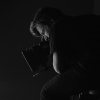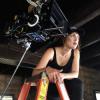Search the Community
Showing results for tags '200T'.
-
Hello everyone! I will be shooting a small home movie for my family. My sis in law has a newborn coming soon and I i wanted to shoot in black and white. I will be shooting inside the hospital and her room. I was thinking for the extra light that I might need, shooting in Kodak 200t and converting to black and white in FCP. I'm new to this, but i'm thinking the extra speed over 7266 will get me slightly better exposure. I will be using my Canon 310xl. My question is, doing a 200t to B&W conversion, will anything be lost? shadow/high-light detail? I am also getting processed/scanned by the pro labs (not sure if that matters). OR should I just get the Tri-X 7266 and shoot with confidence. I mean, the 310xl has a pretty wide aperture so I can see how it can be used with no issues. Thanks in advance!
- 4 replies
-
- canon 310xl
- 200t
-
(and 4 more)
Tagged with:
-
I have just purchased two cameras. Canon 514XL-S (Canosound) Canon 814XL Electronic I am planning to film indoors with artificial light/tungsten bulbs and Kodak Vision 3 - 200T. A am new in the Super 8 game, but this is a project I take very seriously. What do I have to do to get the best results with these cameras and this film, regarding to settings etc? Thanks.
-
- Canon 514XL-S
- Canon 814XL Electronic
-
(and 2 more)
Tagged with:
-
Happy Sunday, I recently watched Inherent Vice for the second time and was truly captivated by the cinematography. I loved the soft vintage look, the noticeable but fine grain in the midtones and the creamy lens flare. Does anyone know how this look was accomplished? I've managed to research my way to knowing that Robert Elswit used Panavision Primo spherical primes from the late 80s, but what accounts for the grain? Was the stock simply pushed a few stops to give it a look which matches period in which the film takes place? I've been searching and searching, but I've not managed to find any interviews with Elswit about the process. I also read somewhere that they used "old film stock found in someone's attic", although I haven't been able to confirm this. Any help or leads greatly appreciated! Best, Kaspar
- 15 replies
-
- 35mmPanavision
- Primo
-
(and 6 more)
Tagged with:
-
Hey guys, anyone know the difference between the 200T and the 250D? I understand the 250D is for daylight. But for the 200T, its shot alot in daylight, so whats the advantage - AND its tungsten balanced....so it would make sense to shoot at night...with slow speed??? Doesnt make sense. Anyway, hopefully you guys will be able to explain. And please dumb down the technical lingo a tad lol Im not a cinematographer - just someone who wants to learn. I do storyboards, and i might direct in the future and knowing this may come in handy. Thanks! Also, how far can I underexpose with the 200T?? And the 250D? I know with 500T you can go under to EI 1600. But what about these faster stocks?
-
hello everyone, I'm a final year cinematography student of ftit, chennai, tamilnadu. Within a month, I'm going to do my diploma film, the academic exercise.My director wants a blue tone overall the movie. so somebody give me suggestions to achieve it since i'm a budding cinematographer. Herewith I'm attaching all the equipments i would be provided : Arriflex III, 500T (2 nos), 200T (4 nos), lenses- 24mm-290mm zoom, 24mm, 35mm, 50mm, 85mm, light- 1kw, 2kw, 5kw. I know many methods would be available like using filters and all, but i would like to know the effective method that would be apt for the mentioned requirements. By the way, the diploma genre is a thriller. Regards Kirubanidhi
-
Hey everyone. I was recently given 10,000 ft of 30 year old 35mm film dated back to 1982. The stocks are Kodak 5247 100T and Kodak 5293 200T. The person who gave them to me was given them by the AD from The Godfather, claiming these were short ends recanned from 1,000 ft rolls. Who knows if this is true- either way, they had been refrigerated and when we loaded them in the mags, they felt almost like new. My friend Geoff Taylor and I shot a roll of each to test. Kodak 5293 - https://vimeo.com/53663199 Kodak 5247 - https://vimeo.com/53709812 I just dropped off 6,000 ft of the 100T to Fotokem from a music video Geoff and I shot last weekend on it. I'll post again when we get it back! KEEPIN FILM ALIVE, Kate Arizmendi
- 6 replies
-
- 35mm
- expired film
- (and 5 more)





